How do different 2d animation styles impact product story
Beyond visual flair, the true impact of a 2D Animation Product story Video hinges on strategic execution and measurable outcomes. While captivating animation draws viewers in, converting that interest requires deliberate planning regarding Calls to action , demonstrating real-world value, and understanding viewer engagement.
A clear and specific call to action at the video's conclusion is essential. Generic prompts yield less impact than action-oriented text tailored to the viewer's journey. Consider " Start Your Free Trial " or "Request a Demo" instead of vague instructions.
Measuring the value generated by an animated video involves tracking production costs against tangible results . This includes increases in qualified leads, a reduction in sales cycle length due to better-informed prospects, or fewer support tickets from users who grasped features through the video.
Demonstrating product features within real-world scenarios makes a product tour relatable. Showing seamless integration into existing workflows or addressing specific industry problems elevates perceived value. Analyzing viewer behavior provides crucial insights. Tools like heatmaps reveal exactly which video segments hold attention, which are rewatched, and where interest drops. This data identifies confusing points or areas needing refinement.
Incorporating social proof builds credibility quickly. Brief flashes of recognizable customer logos or mentioning statistics about satisfied users fosters trust. A/B testing different elements, such as the initial seconds, CTA wording, or even script variations, yields significant data on audience resonance and conversion drivers. Optimizing for different platforms , considering viewer intent and environment, ensures maximum reach. Social media demands instant attention and potential sound-off viewing, while product pages allow for more detailed content.
Ultimately, a successful 2d animated software explainer combines creative style with a data-driven approach , ensuring every element works towards achieving business goals.
Character design choices shape product story connection
Building on the connection fostered by relatable characters, an effective 2d explainer video transcends mere description; it tells a story that resonates, making the product's benefits feel personal. This narrative foundation is crucial because a viewer who sees themselves in the story and understands the problem being solved is far more likely to engage further. The ultimate goal is to guide this engaged audience toward taking a specific, desired action.
This guidance comes through clear and specific calls to action (CTAs). Moving beyond generic prompts, action-oriented text directly relevant to the video's objective—whether "Start Your Free Trial" or "Request a Demo"—channels the viewer's interest effectively at their particular stage in the journey. These precise instructions minimize ambiguity and encourage immediate next steps.
Measuring the success of this engagement, particularly for a 2d product explainer , involves tracking the tangible value generated. Teams measure the return on investment by comparing production costs against results like increased qualified leads or a reduction in support requests from users better informed by the video content. Understanding viewer interaction helps refine these outcomes.
- Analyzing viewer behavior through heatmaps and attention tracking reveals exactly which parts of the story or product demonstration capture interest or cause viewers to disengage, providing data for optimization.
- Incorporating social proof, such as displaying well-known customer logos or user statistics, quickly builds credibility and trust, reinforcing the positive impression made by the narrative and character connection.
- A/B testing different video elements, from the initial thumbnail to the wording of the final CTA, offers valuable insights into what resonates most strongly with the target audience and drives higher conversion rates .
- Optimizing the video for different platforms involves tailoring content length, reliance on audio, and visual cues like text overlays to match varying viewer intent and typical viewing environments.
Ultimately, success stems from a strategic approach that integrates compelling creative choices, like relatable characters, with rigorous performance analysis and adaptation across distribution channels.
Effective storytelling techniques for product animation videos
To ensure their animated marketing video achieves its goals, creators employ several key techniques. Building on the understanding that initial impact is vital and showing is more powerful than telling, they focus on guiding the viewer towards specific actions and understanding the video's performance. It is essential to end videos with clear and specific calls to action, moving beyond generic prompts. Instead, they use action-oriented text like "Start Your Free Trial" or "Request a Demo," carefully chosen based on the video's objective and the viewer's place in their journey.
Within an animated product overview video , they demonstrate features using real-world scenarios and relevant contexts. Showing how the product seamlessly integrates into existing workflows or addresses specific industry challenges makes the value immediately apparent and relatable. Analyzing viewer behavior through tools like heatmaps provides granular data, revealing precisely which segments viewers watch, rewatch, or skip. This data is invaluable for identifying confusing points or moments where interest wanes, allowing for Data-driven refinement .
They also strategically incorporate social proof. This might involve brief flashes of well-known company logos that use the product or mentioning compelling statistics about satisfied users. Such elements build credibility and trust quickly with the audience. Furthermore, they recognize the power of A/B testing various video components.
- Testing different thumbnail images can significantly impact initial click-through rates.
- Experimenting with the content of the first 10 seconds helps maximize initial engagement.
- A/B testing the placement or specific wording of the call to action identifies which version drives higher conversions.
- They also tailor video length and detail, optimizing for different platforms and viewer intent, ensuring the message resonates whether on a fast-scrolling social feed or a dedicated product page.
Measuring the return on investment involves tracking production costs against generated value.
Visual concepts making 2d animation product story memorable
Moving viewers from initial interest to decisive action requires optimizing the animated story well beyond its first impression. Creatives focus on showing the product in action, placing it within real-world scenarios to help audiences instantly grasp its relevance and imagine how it integrates into their daily tasks or addresses industry-specific challenges. This practical demonstration makes the product's value tangible, building a powerful, relatable connection.
Adding layers of credibility significantly boosts the story's persuasive power. Strategically weaving in social proof, such as showcasing logos of recognizable companies already using the product or highlighting impressive user statistics, leverages the influence of existing users. This external validation reassures potential customers, fostering trust and making them considerably more receptive to the presented solution and its promised benefits.
Achieving maximum impact also necessitates tailoring the video experience to diverse viewing environments. A detailed animated product tutorial video on a dedicated support page can offer comprehensive step-by-step guidance, assuming focused viewer intent. Conversely, an animated product use case video shared on social media platforms needs to immediately grab attention and quickly demonstrate a specific benefit or solution, often designed to be understood even without sound through text overlays. Adapting video length, format, and core messaging ensures the story resonates effectively wherever it is seen, maximizing reach and comprehension.
- Clear calls to action are essential to guiding the viewer forward. Moving beyond generic prompts towards specific, action-oriented directives like "Start Your Free Trial" or "Request a Live Demo" aligns directly with viewer intent and stage in the journey, driving desired conversions.
- Analyzing viewer behavior offers invaluable insights into audience engagement. Utilizing tools that reveal viewing patterns, such as heatmaps showing where viewers watch closely or drop off, pinpoints precisely which parts of the story captivate or confuse, informing targeted improvements.
- Employing A/B testing systematically refines video elements based on empirical data. Experimenting with different thumbnail images, variations in the opening seconds, or alterations to CTA placement or wording reveals what truly resonates most with the target audience, driving higher engagement and conversion rates.
- Measuring return on investment provides a clear picture of the video's business success. Tracking the total video costs against the value generated, such as an increase in qualified leads, a reduction in support inquiries, or a decrease in the sales cycle length, quantifies the tangible value delivered.
Focusing on these strategic elements ensures animated product stories are not merely engaging visually but serve as powerful tools that actively guide viewers toward desired outcomes, yielding significant and measurable business results.
Showcasing product visually in 2d animation story
Creating a compelling animated product video involves more than just bringing visuals to life; it requires strategic thinking about how viewers interact with the content. Beyond the initial visual appeal, maximizing impact means focusing on practical elements that guide audience action and provide measurable results. They need to consider the viewer's journey and what they want them to do after watching.
For those aiming to clearly demonstrate functionality, crafting an animated product walkthrough video allows viewers to see the product's features within relevant contexts, making its value immediately apparent. Showing the product integrated into familiar, real-world scenarios helps audiences connect the solution to their own potential challenges. This visual context is powerful for building understanding and highlighting tangible benefits, showing how the product improves daily tasks or fits existing workflows.
Understanding how audiences engage with the video is crucial for optimizing performance. Analyzing viewer behavior through tools like heatmaps reveals which parts of the video hold attention and where interest drops. This data provides valuable insights into what resonates most and what might need refinement. Experimentation is key; they can use A/B testing to compare different versions of the video, perhaps varying the opening scene, the demonstration style, or the calls to action to see which performs better.
Key strategies elevate visual showcasing impact:
- Implementing clear, action-oriented calls to action guiding viewers to specific next steps like starting a trial or requesting a demo.
- Incorporating social proof, subtly showing logos of known companies using the product or sharing statistics about satisfied users builds credibility quickly.
- Optimizing the video for different platforms, considering varying viewer intent, viewing environments (like sound off on social feeds), and preferred content length.
- Measuring video ROI by tracking production costs against generated value, such as increases in qualified leads or reductions in support inquiries from better-informed users.
By focusing on these strategic elements, creators transform visually appealing animations into powerful tools that not only showcase a product but actively contribute to achieving business goals.
Explaining product benefits through 2d animation video
The initial story connects viewers, yet elevating that connection requires deliberate strategic choices beyond just the narrative. Explaining product benefits through 2d animation video becomes potent when integrating practical elements guiding the viewer toward action and demonstrating real-world application. They move past simply showing features to depicting how the product transforms a user's environment or simplifies their tasks, making the benefits tangible for those seeking solutions.
Calls to action serve as vital directional cues for interested viewers. Instead of vague requests, employing specific, action-oriented text directly relevant to the video's goal and the viewer's position proves far more effective. Whether encouraging a free trial signup, requesting a demonstration, or downloading a report, clarity in the next step maximizes conversion potential. Showing the product functioning within familiar scenarios makes its value immediately apparent, highlighting how it integrates into existing workflows or solves industry specific problems.
Measuring success moves beyond simple view counts. Tracking costs against generated value, such as increases in qualified leads or reductions in support inquiries from Improved user understanding , offers a clearer picture of return on investment. An animated SaaS product explainer or an animated sales video leverages these techniques.
- Viewer behavior analysis provides granular data points. Tools like heatmaps show precisely which parts of a video resonate or cause viewers to disengage, offering actionable insights for optimization and identifying where interest drops.
- Incorporating social proof within presentations builds immediate credibility viewers trust. Displaying recognizable customer logos or sharing compelling statistics about satisfied users quickly validates the product offering.
- Continuously refining video elements through A/B testing different approaches identifies what truly resonates with the target audience, driving higher performance. Testing thumbnails, initial content, or CTA wording yields insights.
- Optimizing video versions for diverse platforms ensures maximum reach and engagement. Videos for social feeds need instant attention; those on product pages can offer more detail for higher intent viewers.
How product story animation highlights problem solution
Crafting an animated story video allows teams to visually articulate customer pain points before presenting the product as a compelling solution. They demonstrate how a product directly addresses user needs, making the value proposition clear and relatable. This approach connects with viewers on a deeper level, showcasing not just features but the tangible benefits and improvements the product brings to their lives.
Driving action requires clear, specific calls to action. Generic prompts like "Learn More" yield less impact than action-oriented text. Teams should use phrases such as "Start Your Free Trial," "Request a Demo," or "Download the Report," tailoring the language to the video's objective and the viewer's stage in their journey.
Measuring success means tracking the return on investment. Teams track production costs against generated value. This value appears as increased qualified leads, shorter sales cycles from better-informed prospects, or fewer support tickets because users understand features.
Showing real-world scenarios makes product tours relatable. Demonstrating features within relevant contexts increases perceived value. For an app product animation, this means demonstrating features within the familiar context of a user's device or daily tasks, showing seamless integration into existing workflows.
Analyzing viewer behavior offers invaluable insights. Tools providing heatmaps and attention tracking reveal exactly which video parts viewers watch, rewatch, or skip. This data helps identify confusing segments or points where interest drops, allowing for optimization.
Incorporating social proof builds credibility quickly. Brief flashes of well-known company logos using the product or mentioning statistics about satisfied users adds trust. A/B testing different elements like thumbnails, the initial content, CTA placement, or script variations yields significant insights into audience resonance and conversion drivers. Optimizing for various platforms ensures an app product animation resonates whether viewed on a social feed or a dedicated landing page, considering viewer intent and environment.
Aligning 2d animation style with target audience
To truly connect with potential customers, creators must ensure their video style resonates deeply with their intended viewers. This goes beyond just appealing visuals; it involves understanding how the audience consumes information and what motivates them to act. Aligning the animation with their specific needs and preferences makes the message far more impactful and memorable. They consider their demographic, their industry, and their familiarity with the product or problem being solved.
They know calls to action cannot be generic. Instead, they employ clear, specific action-oriented prompts directly relevant to the viewer's journey and the video's objective. Measuring the true impact involves tracking more than just views; they compare production costs against tangible value generated, seeking increases in qualified leads or decreases in support inquiries as key indicators of ROI. Using real-world scenarios and demonstrating how a product integrates into existing workflows or solves specific problems makes a product tour relatable and believable.
- Analyzing viewer behavior through heatmaps and attention-tracking tools reveals precisely which segments hold interest or cause confusion. This granular data allows for targeted refinement.
- Incorporating social proof, such as brief flashes of recognizable company logos or user statistics, builds credibility and trust quickly, showing proven value.
- A compelling how it works animation can visually guide viewers through complex functionality, clarifying value proposition efficiently.
- They constantly A/B test different elements—from the thumbnail image to the script or CTA placement—to identify what resonates most with the target audience and drives higher conversions.
Optimizing content involves considering viewer intent and platform environment. An explainer animation video for social feeds needs immediate impact and often works without sound, while one on a product page allows for greater detail given higher viewer intent.
Using 2d animation to simplify complex ideas
Crafting product stories with animation allows creators to connect deeply with potential users. Beyond merely explaining features, a well-executed motion graphics product video aims to drive action and demonstrate tangible value in relatable ways. They consider clear and specific calls to action vital, moving past generic prompts to use action-oriented text like "Start Your Free Trial" or "Request a Demo." These calls align with where a viewer might be in their journey, directing them precisely toward the next desired step.
Measuring the effectiveness of this animated content involves tracking production costs against value generated. This value might manifest as increased qualified leads, a shorter sales cycle due to prospects arriving better informed, or a reduction in support tickets because users understood features clearly from the video. Quantifying these outcomes helps teams understand the return on their investment in a product animated explainer video.
Making the narrative relatable proves crucial. They show the product functioning within real-world scenarios, demonstrating how it integrates into existing workflows or solves problems specific to a user’s industry or daily tasks. Incorporating social proof, perhaps brief flashes of recognizable client logos or user statistics, builds credibility and trust swiftly, reinforcing the product's established value.
- Analyzing viewer behavior with tools like heatmaps reveals exactly which parts of a product tour viewers watch, rewatch, or skip. This granular data highlights confusing segments or points where interest drops.
- Conducting A/B testing on video elements, such as the thumbnail image, the initial seconds of content, or variations in CTA wording, provides insight into what resonates most with the target audience.
- Optimizing for different platforms requires considering viewer intent and viewing environment. Social media videos need to grab attention instantly, potentially without sound using text overlays, and should be shorter.
- A video embedded on a product page assumes higher viewer intent, allowing for slightly longer, more detailed content tailored to someone actively seeking information.
By strategically implementing these elements and continuously refining their approach based on data, teams can significantly enhance the impact of their animated product stories.
The role of color palette in 2d product animation
A carefully chosen color palette acts as a silent, yet incredibly powerful, guide in 2D product animation , moving far beyond simple aesthetics. Colors immediately establish brand identity and set the emotional tone, subtly steering viewer perception from the very first frame. This strategic use of color helps direct the eye, contributing significantly to visual interest and maintaining a cohesive flow throughout the product story.
Clarity is paramount, especially in a Technical product animation where complex features must be easily grasped. Here, color plays a subtle yet significant role, helping differentiate UI elements or illustrate workflow steps within real-world scenarios, simplifying understanding. Analyzing viewer behavior often reveals that strategic color choices impact engagement and where audiences focus their attention, providing valuable data on visual effectiveness.
Making actionable steps clear is essential; high-contrast colors ensure clear and specific calls to action stand out effectively, prompting viewers towards conversion goals. Color consistency reinforces trust, a key factor when incorporating social proof elements. Furthermore, color schemes represent a critical variable to explore when A/B testing different video versions. In a product introduction animation , the palette establishes that crucial initial impression, setting expectations, and careful optimization is needed for diverse platforms to ensure colors remain impactful across various screens and viewing environments.
- The right colors can enhance the perceived professionalism of the video, supporting the product's value proposition and indirectly influencing factors tracked for ROI.
- Using color to highlight key data points or benefits within the animation reinforces the product's positive impact on users.
- Adapting the color palette for different target audiences or specific marketing campaigns can increase resonance and engagement.
- Color assists in creating visual hierarchy, ensuring important information is noticed quickly.
Ultimately, thoughtful color selection is integral to crafting effective 2D product stories that not only engage but also drive measurable results and enhance understanding.





































